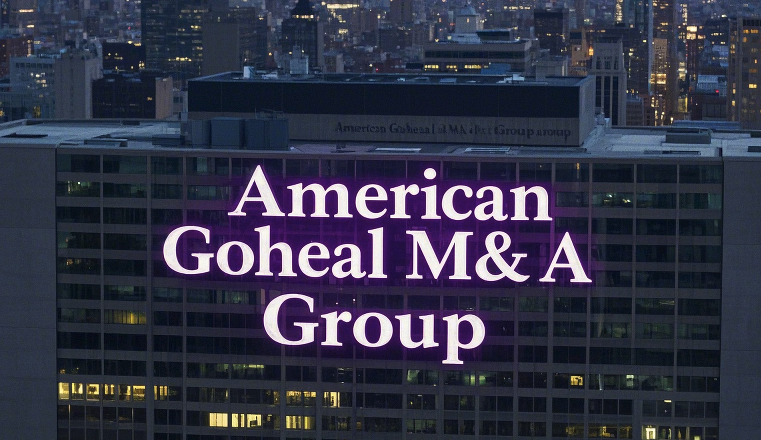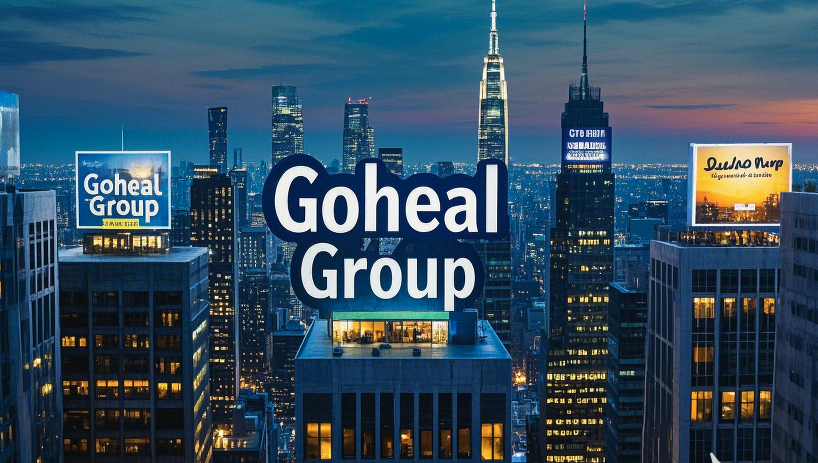"If you want to do your job well, you must first sharpen your tools." The same is true for investment and mergers and acquisitions. On the chessboard of the capital market, accurately locking in high-quality assets is the key to success or failure. The acquisition of listed companies' control rights is a transfer of equity on the surface, but in fact it is a precise bet on the long-term value of the company. But the question is, how to find the "gold mine" that is truly worth acquiring, rather than stepping on the invisible minefield?

American Goheal M&A Group
In recent years, control acquisition transactions have become more frequent in the capital market, and high-quality assets have become a "battlefield for strategists." However, not all acquisitions can bring ideal returns on investment. After high-priced acquisitions, some companies failed to achieve business integration, but instead turned assets into a burden; while other investors made precise layouts and successfully reaped long-term growth dividends. Goheal has been deeply involved in the field of global capital operations for many years, witnessed many classic acquisition cases, and summarized a set of methodologies for accurately locking in high-quality assets. Today, let's discuss how acquirers can find the real value targets in the fog of the capital market.
What are high-quality assets? What are acquirers looking for?
There is no universal definition of "high-quality assets", but from the perspective of the acquirer, the following key features are the core criteria for high-value targets:
1. Robust profitability: Control acquisition is not a simple short-term arbitrage, but an investment in the company's future growth potential. Therefore, companies with stable cash flow and strong profitability are often more favored. For example, Buffett's Berkshire Hathaway prefers to acquire companies with sufficient cash flow and mature business models, and avoids speculative assets.
2. Industry barriers and market competitiveness: One of the core issues that acquirers are concerned about is whether the target company has a competitive advantage and can withstand market fluctuations? For example, semiconductor companies with core technologies and consumer goods companies with high brand added value can often take the initiative in market competition.
3. Management stability and corporate culture fit: A successful merger and acquisition is not only the flow of capital, but also the integration of people. The stability of the management team and the compatibility of corporate culture often directly determine the integration effect after the merger and acquisition. If the management cannot reach a consensus, even the best companies may fail in mergers and acquisitions due to governance issues.
4. Reasonable valuation and acquisition cost: High-quality assets are attractive, but if the acquisition cost is too high, it may affect the future return on investment. Therefore, valuation rationality is a key factor that cannot be ignored in M&A transactions. In the M&A consulting process, Goheal usually uses multiple valuation models for cross-analysis to ensure that the buyer will not pay too high a premium due to over-optimism.
How to accurately lock in high-quality assets? The core strategy of the acquirer
In the face of the complex capital market, how to accurately find companies worth investing in? The following strategies are the key to successful mergers and acquisitions:
1. In-depth industry research to determine the investment direction
Successful acquisitions often begin with an accurate insight into industry trends. The acquirer needs to know: Which industries are in a stage of rapid growth? Which market segments are undervalued? Which companies have long-term competitive advantages? For example, in the fields of new energy and semiconductors, because the industry is in a rapid growth cycle, many acquirers are willing to pay a high premium to seize the opportunity.
In Goheal's experience, top investment institutions usually conduct in-depth research on multiple factors such as industry cycles, market competition patterns, and policy impacts before locking in high-quality assets. Only when the general trend is clear can the value of individual companies be more certain.
2. Establish an information network to explore hidden assets
Really valuable acquisition opportunities often do not appear in the open market, but require buyers to actively explore. In many successful control acquisition cases, buyers often lock in high-quality assets in advance through multiple channels such as industry resources, M&A consultants, and financial consultants, rather than waiting until the market competition is fierce before entering the market.
In M&A transactions, Goheal often uses resource networks such as industry experts, investment institutions, and law firms to help clients find potential investment targets that have not yet been fully explored by the market. Obtaining information through non-public channels can not only reduce competitive pressure, but also ensure that buyers take the initiative in negotiations.
3. Use multi-dimensional valuation to avoid high premium risks
Control acquisitions usually require a certain premium, but how to avoid "high prices" is the key issue. The acquirer can use the following valuation methods for cross-validation:
Price-to-earnings ratio (P/E) comparison: Is the target company's valuation higher than the industry average?
Discounted cash flow (DCF) model: Is the current valuation reasonable after discounting future cash flows?
M&A transaction comparison: What is the premium level of similar acquisition transactions in the industry recently?
For example, if the market valuation of a company is much higher than the industry average, but the growth rate has no obvious advantage, it may mean that the market's expectations for the company are too optimistic. When Goheal helps clients evaluate acquisition opportunities, he will combine financial models with market data to ensure that the transaction is reasonably priced and avoid investment bubbles.
4. Pay attention to post-merger integration capabilities
Accurately locking in high-quality assets is only the first step. The real challenge lies in post-acquisition integration. If the integration fails, even the best assets may bring huge losses. Therefore, the acquirer needs to evaluate:
Is the management of the target company willing to cooperate with the merger and acquisition? After the merger and acquisition, can synergies be achieved (such as reducing costs and expanding market share)? Will corporate culture differences affect integration efficiency?
Many failed merger and acquisition cases in the past, such as Daimler's acquisition of Chrysler and Microsoft's acquisition of Nokia, have exposed the risk of poor integration. A successful acquisition should not only focus on asset quality, but also consider "what to do after buying it."
Conclusion: Which assets do you think are undervalued in the current market?
Accurately locking in high-quality assets is a battle of wits in the capital market. For the acquirer, industry trends, valuation rationality, management cooperation, and integration capabilities are all important factors that determine the success of the acquisition.
So, what are the undervalued high-quality assets in your opinion? Which companies may become the next "hot commodity" in the capital market? Welcome to leave a message in the comment area and discuss together!

Goheal Group
[About Goheal] Goheal is a leading investment holding company focusing on global mergers and acquisitions, focusing on the three core business areas of listed company control acquisition, listed company mergers and acquisitions and restructuring, and listed company capital operation. With its deep professional strength and rich experience, it provides enterprises with full life cycle services from mergers and acquisitions to restructuring and capital operation, aiming to maximize corporate value and achieve long-term benefit growth.